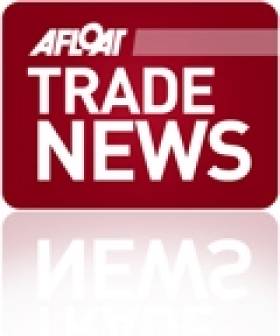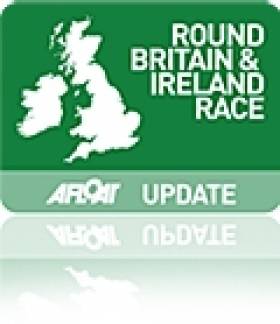Displaying items by tag: Ker 46
McConaghy Appoints Ancasta as Ireland Dealer
The initial focus of this new partnership is on the Ker 40; the Jason Ker Designed IRC racer. In addition to the Ker 40, Ancasta will also be promoting the McConaghy 38; an out and out lunatic machine that conforms to no rules and just goes fast upwind and downwind!
The Ker 40 is anticipated as being the next big step in IRC racing. It performs beautifully upwind whilst being exhilarating downwind. This fusion of TP52 inspired performance mixed with an ability to compete under IRC rating is a combination that offers something unique at a price which is very inclusive.
Nick Griffith MD of Ancasta commented: "We are all very excited about the Ker 40, the challenge under IRC has always been to produce a competitive boat under 50' that is also exciting to sail. I have been so impressed with Jason's efforts with the Ker 46 Tonnere and we see the 40 as the next step in that development. At last a full blown 40' race boat competing under IRC. Happy days indeed!"
Ancasta through its extensive network will be handling all the sales and marketing as well as providing the highest standard of after sales care and support. The first two Ker 40's coming to the UK will be based at Hamble Yacht Services in time for this seasons racing.
No Irish for Record Breaking Round Britain and Ireland Race
Although there is a record fleet for the Sevenstar Round Britain and Ireland race there is no Irish entry for what is one of the most challenging races in the world. For the 2010 edition, more competitors than ever will be racing around Great Britain, Ireland and all of the outlying islands. Irish fans will have to make do with supporting June's Round Ireland Race winner, Tonnerre de Breskens 3, Piet Vroon's Ker 46 when the race starts in seven days time.
The non-stop race has 29 entries and has attracted a diverse range of ocean-going yachts, with world-class professional teams rubbing shoulders with corinthian crews. They all have one thing in common: to take on this iconic race and everything that mother nature can throw at them.
Nine Nations Compete
Yachts flying the ensigns of Austria, Britain, France, Germany, Holland, Italy, Lithuania, Spain and Sweden will cross the Royal Yacht Squadron start line off Cowes, Isle of Wight on Monday 23rd August. The course takes them through a myriad of different conditions and crews will have to cope with a huge number of elements which make this race just so compelling.
RORC CEO, Eddie Warden Owen explains: "Crews will face the vagaries of the tides and unpredictable weather; dodging oil rigs and container ships as well as relying on tactical and navigational decisions and great seamanship to get them round the course! Most sailors agree that this race is one of the toughest tests as it is nearly as long as an Atlantic crossing, but the changes of direction at headlands will mean constant breaks in the watch system for sail changes and sail trim."
Course record breaker on ICAP Leopard
The out and out favourite for line honours and perhaps a course record, is Mike Slade's 100ft Maxi, ICAP Leopard who will also have previous course record holder, Sam Davies on board. Slade is sure to have a set of numbers duct-taped to the navigation station: 06:11:30:53 - the current course record which was set in 2009 by Sam Davies and Dee Caffari in Dee's Open 60, Aviva.
Round the World Sailors Volvo 70 duel
It has been over a year since the finish of the 2008-09 Volvo Ocean Race and the Sevenstar Round Britain and Ireland Race sees the return of two canting keel Volvo 70s to the racing arena. There is the mouthwatering prospect of Groupama locking horns with Telefonica Azul for a duel, which could well go to the wire. Both teams will be racing around the world in October 2011 and this is the first time the two teams have done battle together. Jules Verne winner, Frank Cammas, skippers Groupama. His opposite number on Telefonica Azul is Iker Martinez and the crew on both boats reads like a 'who's who' of round the world sailors, including Neal MacDonald, who will be racing on Telefonica Azul:
"I have very fond memories of the race," commented Neal MacDonald who first competed on Sticky Fingers in 1994. "I had a fantastic time, great sailing on a good boat with a fun crew. The race course is shorter than say an Atlantic crossing, but can be a lot tougher and often far more complex. The main reason it is so much harder is that there are so many corners to go round, each one normally associated with a change of weather conditions. Lots of tacks and gybes, lots of sail changes and a massive variety of weather conditions. For the entire race, it is impossible to get into a proper routine or watch system. It is a rewarding but very tiring race. It is always a pleasure to sail in home waters but to sail round your home country is fantastic, a real experience. I'm very much looking forward to it. It will also be a proper race with some great competition. All in all it has the makings of a terrific race."
Corinthian Entries
Whilst the bigger boats may be crewed by seasoned professionals, there are many corinthian entries in the race. Adrian Lower is a gynaecologist and father of three and will be racing the Swan 44 Selene under the burgee of the Royal Burnham Yacht Club: "I have put together a great team of East Coast sailors and we look forward to the challenge. Our sights are set particularly on Winsome, another Sparkman and Stephens design from the 1970's. She is extremely well sailed and their team has sailed together for a number of years. Winsome has been our benchmark in the 2009 Rolex Fastnet and North Sea Race this year.
Spectators can follow the race as each boat is supplied with an OCTracker beacon. Synchronised position reports will be displayed graphically at regular intervals on the race website. The media and general public are able to see at a glance the relative positions of all boats in the fleet and where they stand on handicap. The competitors will also be sending messages, pictures and videos of their adventures, which will be screened, on the main event web site: http://sevenstar.rorc.org/.
Following the success of the Virtual Fastnet Race last year, when 27,000 players entered online, the Royal Ocean Racing Cub is working with online race experts Virtual Regatta to provide a virtual race round the British Isles for the Sevenstar Round Britain and Ireland Race. Armchair experts around the world can test their skills against the sailors racing on the yachts. The course will mirror the 1802 n mile race which tests inshore and offshore skills, preparation and speed potential. The virtual race will be no different! Sign up via the website: (http://sevenstar.rorc.org/).
Entries for the Sevenstar Round Britain and Ireland Race 2010:
Flag Boat Name Owner/Skipper Design
1 SWE Alicia Jonas Sandberg First 50
2 LTU Ambersail Simonas Steponavicius VO60
3 NED Arethusa Cornelis Mijs J 109
4 GBR Artemis Ocean Racing Andrew Tourell IMOCA 60
5 NED Beluga Floris Ingen Housz Baltic 45
6 GBR British Soldier Army Sailing Assoc/Tim Hill A 40
7 AUT Celox 40 Gottfried Pössl Class 40
8 GBR Change of Course Keith Gibbs C & C 115
9 GBR Cheeki Rafiki Stormforce Coaching/Doug Innes First 40.7
10 GBR Concise 2 Tony Lawson/Tom Gall Class 40
11 GBR Hull and Humber Clipper Ventures Clipper 68
12 GBR Edinburgh Inspiring City Clipper Ventures Clipper 68
13 GBR Encore Steven Anderson First 40.7
14 GBR Fair Do's VII John Shepherd Ker 46
15 FRA Groupama Franck Cammas Volvo Open 70
16 ITA In Direzione Ostinata E Contraria Luca Zoccoli Ostar 35
17 GBR John B Charles Ivill Grand Soleil 54
18 GBR John Merricks II British Keelboat Academy/Luke McCarthy TP 52
19 GBR ICAP Leopard Mike Slade Maxi 100
20 GER Norddeutsche Vermögen Hamburg Hamburgische Verein Seefahrt e.V. Andrews 56
21 GBR Playing Around Logic Sailing Logic/Peter Robson First 40.7
22 GBR Relentless on Incisor Chris Radford/James George Corby 45
23 GBR Selene Adrian Lower Swan 44
24 GBR Sonic Boom II Simon Brady Figaro II
25 ESP Telefónica Azul Equipo Telefonica / Iker Martinez Volvo Open 70
26 NED Tonnerre de Breskens 3 Piet Vroon Ker 46
27 FRA Vecteur Plus Nicolas Groleau Mach 45
28 GBR Visit Malta Puma Sailing Logic/Philippe Falle Reflex 38
29 NED Winsome Harry Heijst S&S 41

























































